- Kia ora
- Time capsule submissions sought
- ‘…and action!’ – Ōtaki College produces PP2Ō video updates
- Quality is remembered long after the work is completed
- Preserving what we uncover for whakairo (Māori carvings)
- Waiting on the weather
- Upcoming construction milestones
- Feedback sought on Mackays Crossing Commercial Vehicle Safety Centre (CVSC)
 Kia ora
Kia ora
I drive past the PP2Ō Expressway every day on my way to work and the progress being made is becoming more obvious every week. The Local Arterial Road at the southern end of the project is open and traffic on SH1 will remain on that new alignment until the Expressway opens. The feedback we’re hearing from people using the road has been really positive, with many telling us the road is easier and safer. It’s a great achievement to have this stretch open before the Christmas holiday season.
Also complete and open is School Road Stage 2. Traffic in that area can now travel over a smooth, sealed piece of road to travel. Work continues on a temporary section of SH1, just south of the Ōtaki River Bridge, to allow the Ōtaki Gorge Road partial interchange to be constructed. We expect we’ll be able to shift traffic onto that before Christmas as well.
Good progress is being made despite the weather, with spring providing some challenging conditions. September was a particularly wet month, with almost double the amount of rain falling compared to the same time last year.
Some essential work, which is not so obvious, are the earthworks happening on site. This month about 15,000 cubic metres have been shifted. On average, we’re carting 1000 cubic metres a day, with most of that used for fill at Bridge 5 North (Ōtaki River Bridge).
Health and safety remains a focus as we approach the end of the year, and we also keep a close eye on the roads where they intersect with our work. We are always looking for ways to make things safer and more efficient for road users and the community, and we appreciate it when members of the community provide us with constructive feedback.
Our aim is to keep everyone safe so we can all enjoy the holiday period. By working together, we will get great results.
COVID-19 continues to linger in the background, of course. We remain diligent with our contact tracing and urge everyone visiting our sites to make sure they sign in either electronically or manually.
If you need any further information on the PP2Ō Expressway project, please call us on 0800 PP2O INFO or email pp2o@nzta.govt.nz
Ngā mihi
Chris Hunt, Project Director
Time capsule submissions sought
Much of what we know of our history has come from artefacts that tell stories of our ancestors. If you could leave a piece of Ōtaki to be discovered by future generations – what would it be?
PP2Ō is seeking submissions for items to be included in a time capsule. It will be placed underneath one of the Interchange Gateway Sculptures, which are being gifted to the community as part of the project. The time capsule theme is ‘Your Ōtaki – what Ōtaki means to you’. This includes contemporary views, historic documents and artefacts showing how Ōtaki came to be, the place it is today and what it means to the community.
Some of the suggestions that have been made are:
- Newspaper clippings of special events
- Music samples from local bands
- Video clips of local events
- Local restaurant menus
- Maps
- Photos
- Dolls and toys
- Locally produced wines or oils
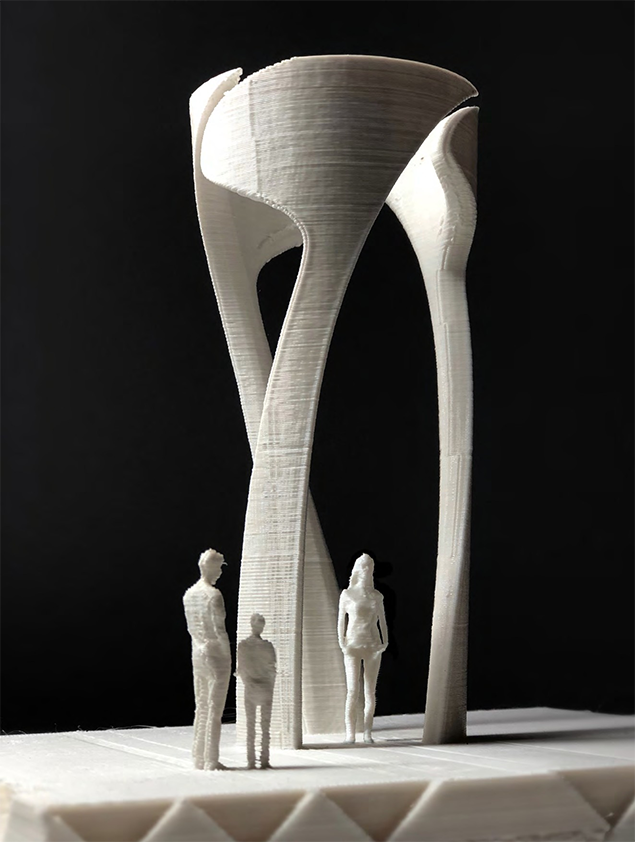
Submissions are open for items to be placed in the time capsule which will be placed under the Gateways sculpture.
All items placed in the time capsule must be dry and non-perishable, so items made from materials like paper, plastic and glass may work best. “Think broadly” is the request from the project team.
As a back-up, the team will collate a hardcopy of all electronic information that is submitted. It’s likely that technology, such as USB sticks, will be obsolete when the time capsule is opened. But – in much the same way we can still watch movies from the 1920s – we’re confident that future generations will still be able to work out how to access that information.
If you would like to submit an item to be considered for the time capsule, please email pp2o@nzta.govt.nz. We would appreciate it if submissions or ideas could be received by the end of November 2020.
‘…and action!’ – Ōtaki College produces PP2Ō video updates
Ōtaki College and Fletcher Construction came to a mutually beneficial arrangement when the PP2Ō project kicked off. The school was looking for opportunities to involve students in media and film studies, and Fletcher wanted to provide monthly video updates for the community and for itself.
So, what better way to do this than to put an agreement in place, and contract the school to carry out the filming?
Working with Head of Department Stephen Aitken, a programme for each year is developed. Stephen assigns students to outline the project through storyboarding and carry out the filming. The team then takes the footage back to the classroom to edit, subtitle and produce the final product.
It’s proved to be a fantastic collaboration that is providing some talented young people with valuable experience.
Quality is remembered long after the work is completed
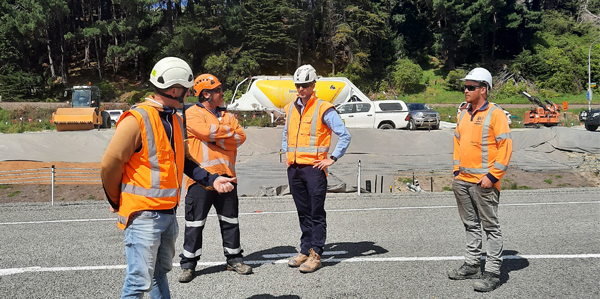
The new road at Marycrest under inspection for quality assurance before its opening.
“The quality of work produced on the PP2Ō Expressway project is our legacy and the deciding factor on how much our services are valued,” says PP2Ō Quality Manager Mark Dadford.
While it may seem that the project team builds the sub-bases, lays the surface and moves on, that construction work runs in tandem with the less visible – but absolutely critical – quality assurance process.
For example, before the opening of the new Local Arterial Road (LAR) at Makahuri (formerly known as Marycrest) on 11 October 2020, various quality processes took place to ensure the new piece of road was completely fit for purpose and safe to travel on. Not only were there hundreds of visual inspections, physical quality tests, and walkovers, but hours and hours of compliance paperwork had to be completed.
The project quality team makes sure that ITPs (Inspection Test Plans) are established months in advance, for each stage of the construction area. They get involved to make sure every aspect of every part of the expressway construction process is compliant with Waka Kotahi NZ Transport Agency specifications – what Mark refers to as “intervention points.”
In the case of the new LAR stage 2, the quality team spent weeks prior to the opening checking on paving standards, road markings, centre line mark-ups, road widths, cat’s eyes, and road safety barriers and many other features. These physical works are typically measured against Waka Kotahi specifications and standards.
“We don’t validate the result – we verify that the work complies,” says Mark.
“Once every item is compliant, we insert the records into a work pack to be signed off. If we are not compliant, we need to rework, retest and comply. We are looking for compliance and quality that has durability and ensure that the LAR has a lifespan of 25 years.”
“My team’s focus is to make sure that the project team is always aligned to the project deliverables and outcomes, and that we meet our client’s requirements.,” says Mark.
Having completed all the necessary tests and checks, the quality team is hoping residents enjoy the new stretch of road through the Te Horo countryside as much as they enjoyed making sure it was safe.
PP2Ō quality principles:
- Customer focus – organisations depend on their customers. They should understand current and future customer needs, meet customer requirements and strive to exceed customer expectations.
- Leadership – leaders establish unity of purpose and direction of the organisation. They should create and maintain an environment where people can become fully involved, and help the organisation achieve its objectives.
- Involvement of people – people are the essence of an organisation. Their full involvement enables the organisation to benefit from their abilities.
- Process approach – a desired result is achieved more efficiently when activities and related resources are managed as a process.
- System approach to management – identifying, understanding and managing interrelated processes as a system contributes to the organisation achieving its outcomes efficiently and effectively.
- Continual improvement – improving overall performance should be a permanent objective.
- Factual approach to decision making – effective decisions are based on the analysis of data and
Preserving what we uncover for whakairo (Māori carvings)
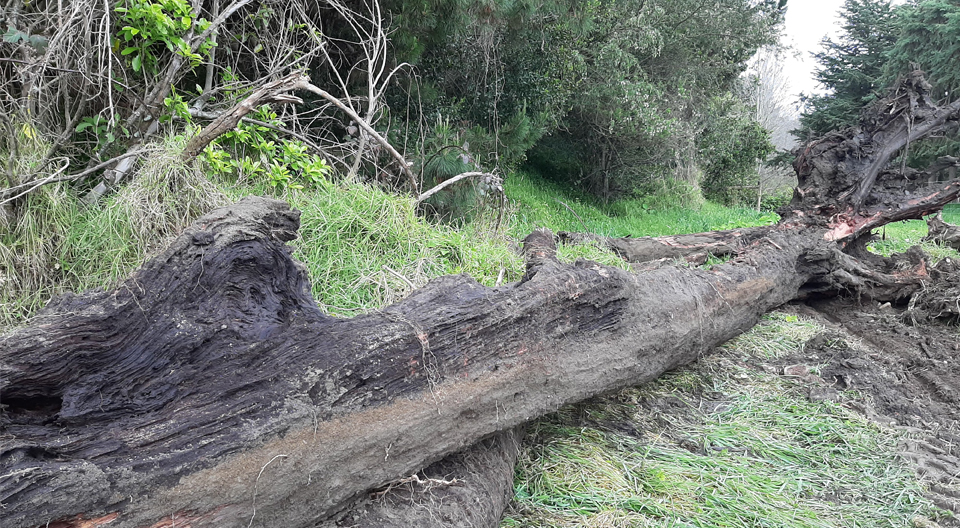
This large tree was uncovered south of Otaki River Bridge and will be used for whakairo.
PP2Ō made exciting discovery in early October when a huge log was uncovered on a property just south of the Ōtaki River Bridge on State Highway 1 (SH1). The team was undercutting the area for the temporary SH1 diversion through Greater Wellington Regional Council (GWRC) land, just inside the project designation.
The species of tree is yet to be confirmed, but after investigating wood samples with some interested locals and the project’s environmental team, Fletcher Construction Project Engineer Shane Soulsby believes it’s a Northern Rata.
“The tree was buried up to a metre deep in silts and topsoil. It still had its roots attached, so the assumption is that it must have been growing in the location where it was found,” he says. “We don’t know, however, if it was naturally buried by a flood, or if it was pushed over and buried as part of the road or reserve construction sometime in the past.”
This precious piece of nature was dug out under the supervision of the project Kaitiaki and moved to a temporary resting place until it can be received by local hapū. They will then transform it into beautiful wooden whakairo (carvings).
Waiting on the weather
Trying to predict when a new road will be ready is often as much about what’s happening above us as what we are doing on the ground. Much of our roading work, such as milling, sealing and line marking, is dependent on having a dry surface.
Spring weather in Ōtaki is always a little unpredictable, although we can always count on there being some rain. This year, spring in the Greater Wellington region has been a lot wetter than normal:
- September 2020 had rain on 26 out of 30 days and nearly twice the amount of rainfall (204.7mm) than in September 2019 (105.7mm)
- September 2020 also had more than five times the average during the decade prior to the PP2Ō project starting (39.2mm)
- September 2011 had the least rainfall of recent years – just 10 rainy days and a total 7.66mm rainfall (less than 1mm for each rainy day, compared to the 7.87mm average in 2020).
That means the project team includes a general “weather dependant” disclaimer on notices and advertisements because neither weather nor roading changes can be exactly predicted. It’s also why you’ll see phrases like ‘from the week beginning xxx’ in our updates. The best way to get updated roading change information is to check out the Waka Kotahi Wellington social media pages:
New road layouts are also generally well-signposted with any change to temporary speed limits clearly marked ahead of the change. The project team reminds travellers how important it is to drive to the posted speed limit and to follow the signs.
September 2020 rainfall
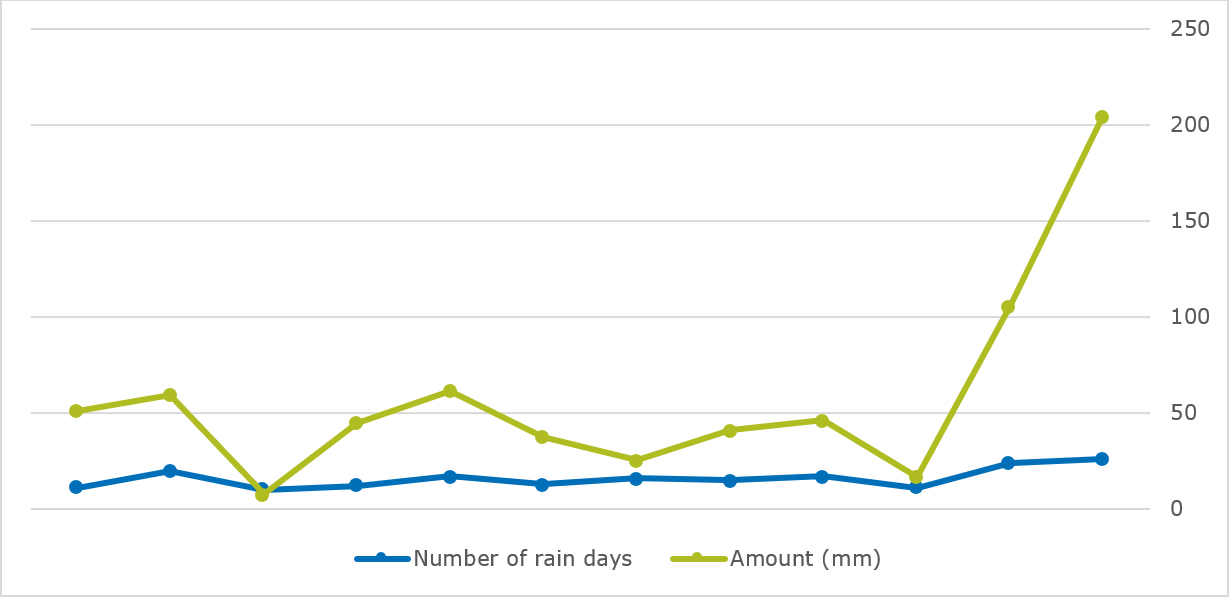
Upcoming construction milestones
Northern area update
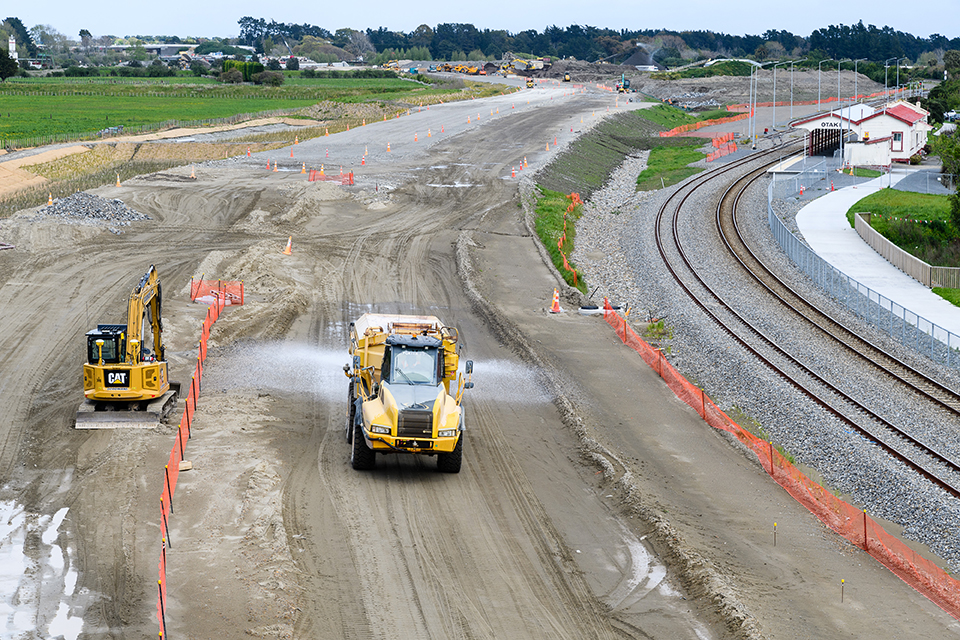
Earthworks continues in the area just south of Rahui Road near the train station.
Drainage and earthworks continue at Taylors Road alignment. All the facing panels have been placed onto the Waitohu Stream Bridge (Bridge 1), and the remaining abutment and utilities works on the bridge are now able to be carried out. Barriers separating the expressway and the railway have started to be installed between the Rahui Road overbridge (Bridge 4) and the Main North Road expressway overbridge (Bridge 2). The first section of pavement subbase material was placed and stabilised on the expressway between the Ōtaki Railway Station and Winstone quarry.
Middle area update
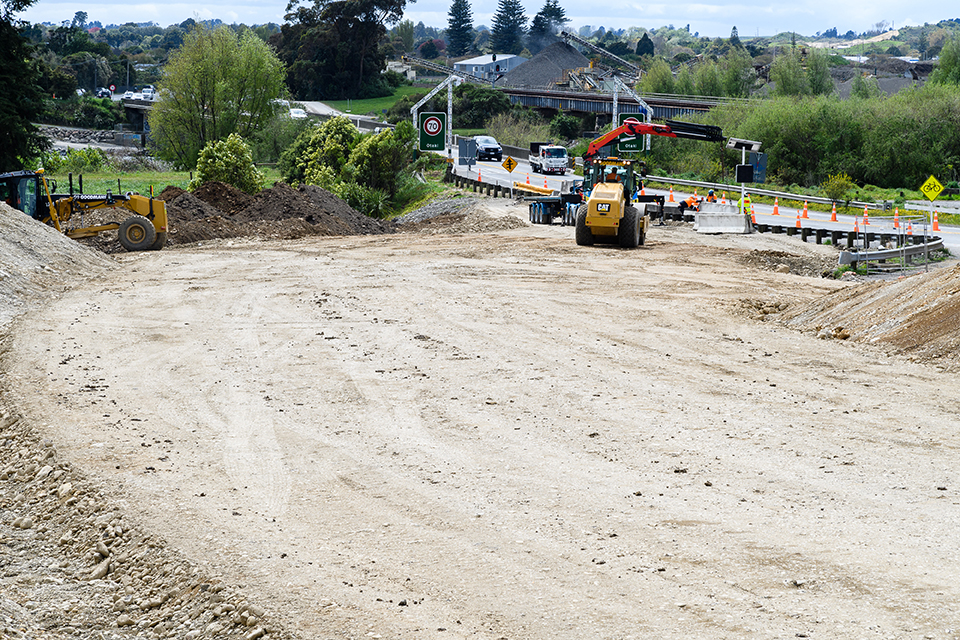
Work is nearly complete on the State Highway 1 diversion just south of Ōtaki River Bridge.
Earthworks and subgrading works have been completed on the temporary section of SH1 to allow for the construction of the Ōtaki Gorge partial interchange. Pavement works will commence later this period. Both School Road (stage 1) and Gear Road have been sealed, and barrier installation has been completed, prior to the traffic being re-routed on both roads. The placement of fascia / barrier panels to both side of the Te Horo Overbridge (bridge 8) was carried out and abutment / utility works at both ends are well underway. Construction of both the east and west approaches to Bridge 8 is progressing well.
Southern area update
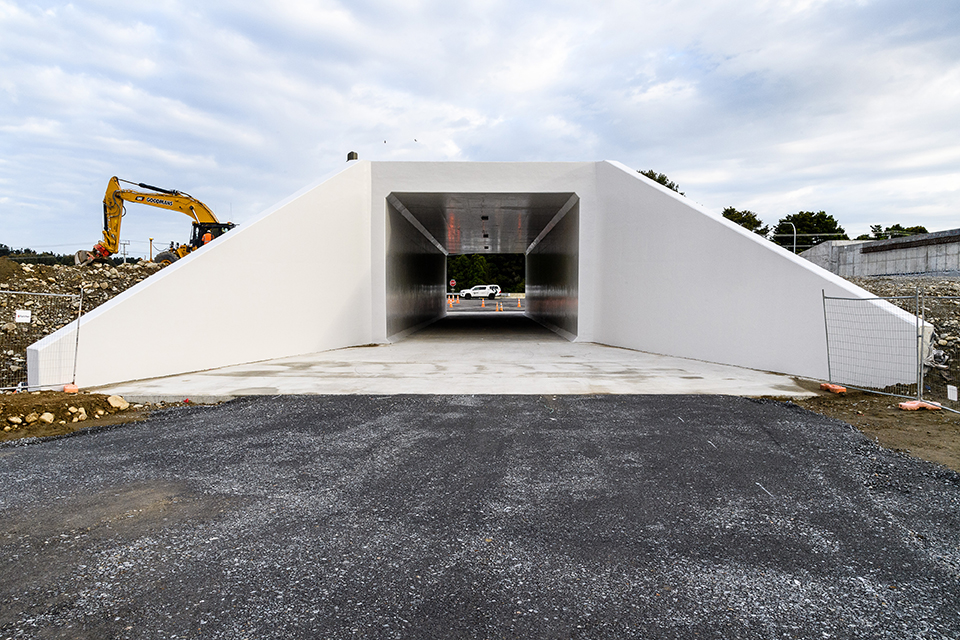
Resident only access is open at Bridge 10.
In between the rain through September and October, the Local Arterial Road (LAR) was completed, with all SH1 traffic being redirected along it from the middle of October. In conjunction, the larger box culvert (Bridge 10) just south of Makahuri (formerly known as Marycrest) was opened to residents only traffic, to enable access under the expressway embankment being constructed atop. With the traffic rediverted, the last of the bulk earthworks and large-scale drainage associated with the southern end of the expressway by the old section of SH1 between Peka Peka and Makahuri, can be accessed.
Feedback sought on Mackays Crossing Commercial Vehicle Safety Centre (CVSC)
Finally, a project unrelated to our work on PP2Ō, which may still be of interest to Kāpiti residents. With the Transmission Gully motorway due to open next year, Waka Kotahi is proposing to build a new Commercial Vehicle Safety Centre (CVSC) just south of Mackays Crossing and is now seeking feedback on the proposal.
The proposed CVSC is one of 12 planned throughout New Zealand as part of the Weigh Right Programme. The programme will install roadside technology and develop intelligent software to direct potentially overloaded vehicles to the CVSC. The technology will allow compliant heavy vehicles to continue their journey uninterrupted.
Mackays Crossing CSVC information
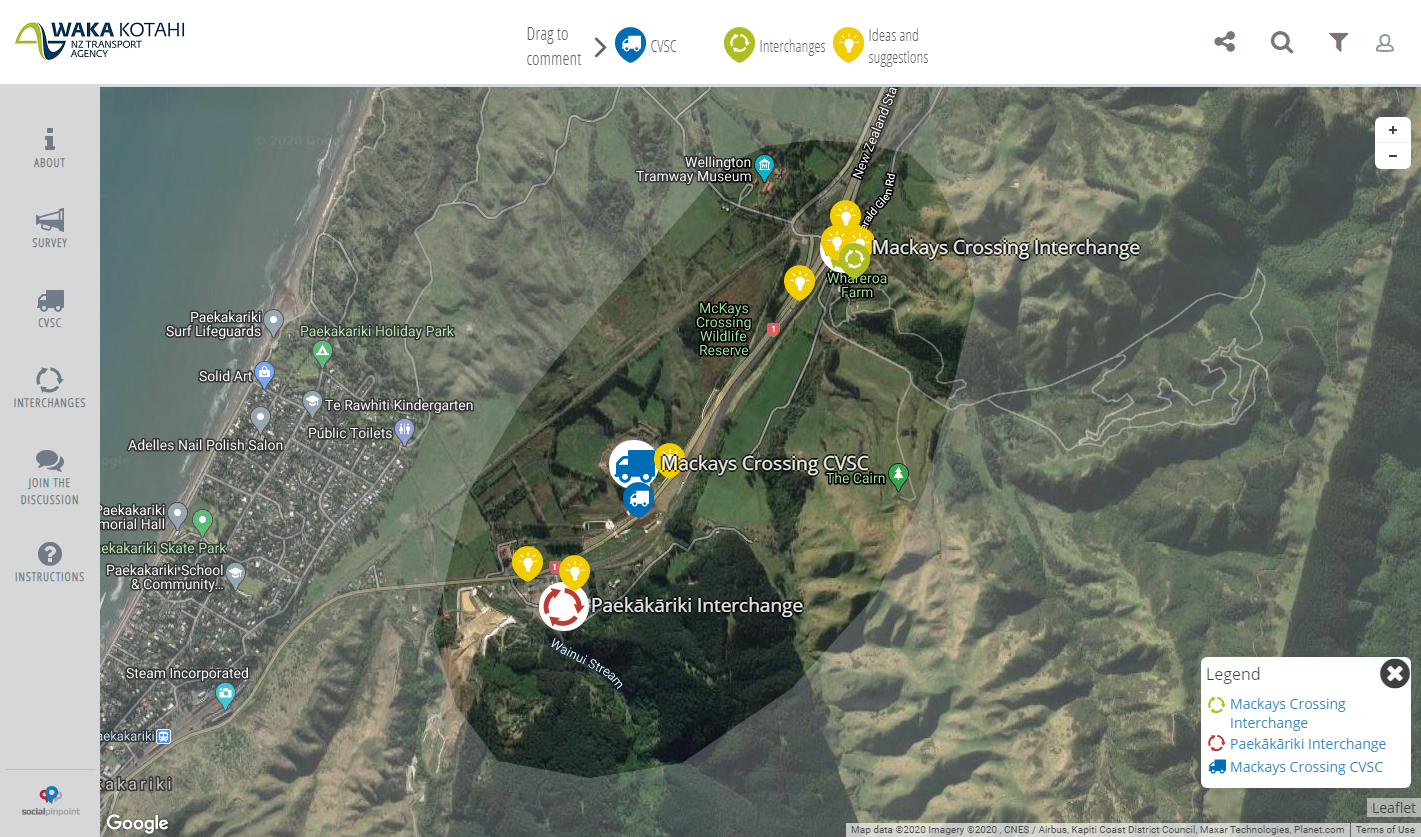
Provide your feedback on this proposal.(external link) For further information please email weighright@nzta.govt.nz